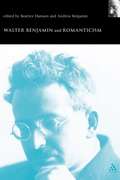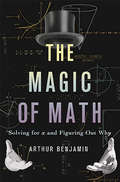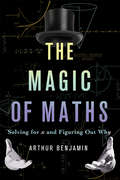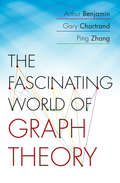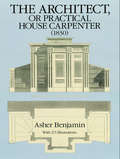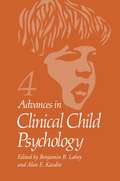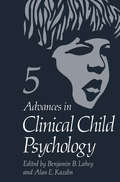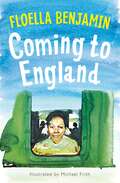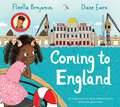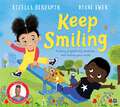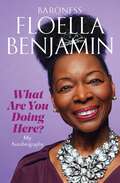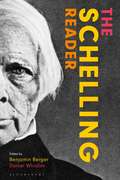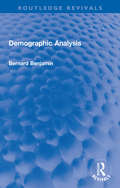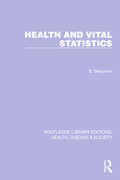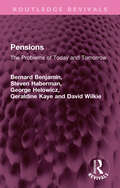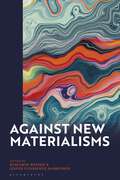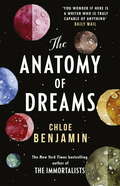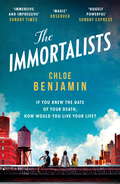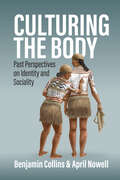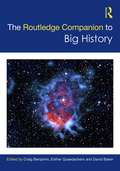- Table View
- List View
Walter Benjamin and Romanticism (Walter Benjamin Studies)
by Andrew Benjamin Beatrice HanssenWalter Benjamin and Romanticism explores the relationship between Walter Benjamin's literary and philosophical work and the tradition of German Romanticism, as well as H÷lderlin and Goethe. Through a detailed and scholarly analysis of the major texts, the book explores the endurance of Benjamin's relationship to Romanticism, the residual presence of Romantic Goethean and H÷lderlinian motifs in Benjamin's subsequent writings and how Benjamin's understanding of the relationship between criticism and Romanticism can still play a vital role in contemporary philosophical and literary practice.Contributors: Andrew Benjamin, Josh Cohen, David Ferris, Beatrice Hanssen, Philippe Lacoue-Labarthe, Charlie Louth, Bettine Menke, Winfried Menninghaus, Anthony Phelan, Sigrid Weigel
The Magic of Math: Solving for x and Figuring Out Why
by Arthur BenjaminThe world's greatest mental mathematical magician takes us on a spellbinding journey through the wonders of numbers (and more)"Arthur Benjamin ... joyfully shows you how to make nature's numbers dance."--Bill Nye (the science guy)The Magic of Math is the math book you wish you had in school. Using a delightful assortment of examples-from ice-cream scoops and poker hands to measuring mountains and making magic squares-this book revels in key mathematical fields including arithmetic, algebra, geometry, and calculus, plus Fibonacci numbers, infinity, and, of course, mathematical magic tricks. Known throughout the world as the "mathemagician," Arthur Benjamin mixes mathematics and magic to make the subject fun, attractive, and easy to understand for math fan and math-phobic alike."A positively joyful exploration of mathematics."-Publishers Weekly, starred review"Each [trick] is more dazzling than the last."-Physics World
The Magic of Maths: Solving for x and Figuring Out Why
by Arthur BenjaminThe world's greatest mental mathematical magician takes us on a spellbinding journey through the wonders of numbers (and more)"Arthur Benjamin ... joyfully shows you how to make nature's numbers dance."--Bill Nye (the science guy)The Magic of Math is the math book you wish you had in school. Using a delightful assortment of examples-from ice-cream scoops and poker hands to measuring mountains and making magic squares-this book revels in key mathematical fields including arithmetic, algebra, geometry, and calculus, plus Fibonacci numbers, infinity, and, of course, mathematical magic tricks. Known throughout the world as the "mathemagician," Arthur Benjamin mixes mathematics and magic to make the subject fun, attractive, and easy to understand for math fan and math-phobic alike."A positively joyful exploration of mathematics."-Publishers Weekly, starred review"Each [trick] is more dazzling than the last."-Physics World
The Fascinating World of Graph Theory
by Arthur Benjamin Gary Chartrand Ping ZhangGraph theory goes back several centuries and revolves around the study of graphs—mathematical structures showing relations between objects. With applications in biology, computer science, transportation science, and other areas, graph theory encompasses some of the most beautiful formulas in mathematics—and some of its most famous problems. The Fascinating World of Graph Theory explores the questions and puzzles that have been studied, and often solved, through graph theory. This book looks at graph theory's development and the vibrant individuals responsible for the field's growth. Introducing fundamental concepts, the authors explore a diverse plethora of classic problems such as the Lights Out Puzzle, and each chapter contains math exercises for readers to savor. An eye-opening journey into the world of graphs, The Fascinating World of Graph Theory offers exciting problem-solving possibilities for mathematics and beyond.
The Fascinating World of Graph Theory
by Arthur Benjamin Gary Chartrand Ping ZhangGraph theory goes back several centuries and revolves around the study of graphs—mathematical structures showing relations between objects. With applications in biology, computer science, transportation science, and other areas, graph theory encompasses some of the most beautiful formulas in mathematics—and some of its most famous problems. The Fascinating World of Graph Theory explores the questions and puzzles that have been studied, and often solved, through graph theory. This book looks at graph theory's development and the vibrant individuals responsible for the field's growth. Introducing fundamental concepts, the authors explore a diverse plethora of classic problems such as the Lights Out Puzzle, and each chapter contains math exercises for readers to savor. An eye-opening journey into the world of graphs, The Fascinating World of Graph Theory offers exciting problem-solving possibilities for mathematics and beyond.
The Architect, or Practical House Carpenter (Dover Architecture #1830)
by Asher BenjaminThe superbly illustrated and detailed handbook that popularized the use of classic Greek architectural style in America in the early and middle 1800s. 271 illustrations.
Advances in Clinical Child Psychology: Volume 4 (Advances in Clinical Child Psychology #4)
by Benjamin B. Lahey and Alan E. KazdinAdvances in Clinical Child Psychology is a serial publication designed to provide researchers and clinicians with a medium for discussing new and innovative approaches to the problems of children. In this fourth volume, a group of highly distinguished authors have described advanc ing knowledge in a number of critical areas of applied child psychology. These include childhood depression, drug abuse, social skills deficits, community-living skills, the genetics of childhood behavior disorders, and affective states in children. In addition, major statements on new approaches to the assessment of dysfunctional family systems and the social skills of children, as well as the increasingly important methodol ogy of epidemiology, are included in this volume. These chapters pro vide a synopsis of many of the most important advances in the field of clinical child psychology. The quality of a series of this sort is, of course, due to the quality of the contributing authors. We feel very fortunate indeed, therefore, to have been able to entice such a distinguished group of authors to con tribute to this volume. We are also most appreciative of the guidance and assistance of the consulting editors who provided us with ideas for chapter topics and authors and who carefully reviewed and edited each chapter. We also express our hearty thanks to Leonard R. Pace of Plenum whose expertise and support has always been generously given. BENJAMIN B. LAHEY ALAN E. KAZDIN ix Contents The Epidemiology of Child Psychopathology 1 William Yule 1. Introduction ............................................ .
Advances in Clinical Child Psychology (Advances in Clinical Child Psychology #5)
by Benjamin B. Lahey and Alan E. KazdinAdvances in Clinical Child Psychology continues to bring to its readers scholarly papers that review and update advances in diverse areas of research with children. The focus on basic and applied work with chil dren encompasses several disciplines and professions. This volume, the fifth in the series, continues to expand the range of topics and specialty areas represented by the contributors. In the present volume, contribu tions address several different topics related to diagnosis, assessment, and treatment of childhood disorders. Taxonomy, nosology, and assess ment of childhood behavioral problems, and social and emotional ad justment are discussed. Contributions also address recent advances re lated to specific disorders including childhood depression, conduct disorders, and hyperactivity. Factors that impinge on child development and have implications for social adjustment and psychopathology are covered in separate contributions on the effects of divorce and life events as stressors in general. Treatment techniques are also covered in the present volume. A separate contribution on pharmacotherapy de tails the latest advances and outstanding issues in that field. Problem solving therapy is also covered in a contribution on the cognitive bases of social adjustment in children. As with previous volumes, we would like to express our gratitude to several persons. Foremost are the contributors whose scholarship and expertise contributed fundamentally to this volume, as well as the over all series.
Coming to England: An Inspiring True Story Celebrating the Windrush Generation
by Baroness Floella BenjaminFloella Benjamin's classic memoir, Coming to England, includes a foreword by the author and some additional historical information. It is beautifully illustrated by Michael Frith.Floella Benjamin was just a young girl when she, her sister and two brothers arrived in England in 1960 to join their parents, whom they had not seen for fifteen months. They had left the island paradise of Trinidad to make a new home in London - part of a whole generation of West Indians who were encouraged to move to Britain and help rebuild the country after the Second World War. Reunited with her mother, Floella was too overwhelmed at first to care about the cold weather and the noise and dirt from the traffic. But, as her new life began, she was shocked and distressed by the rejection she experienced. She soon realized that the only way to survive was to work twice as hard and be twice as good as anyone else. This inspirational story is a powerful reminder that courage and determination can overcome adversity.
Coming to England: An Inspiring True Story Celebrating the Windrush Generation
by Baroness Floella BenjaminA picture book story about the triumph of hope, love, and determination, Coming to England is the inspiring true story of Baroness Floella Benjamin: from Trinidad, to London as part of the Windrush generation, to the House of Lords.When she was ten years old, Floella Benjamin, along with her older sister and two younger brothers, set sail from Trinidad to London, to be reunited with the rest of their family. Alone on a huge ship for two weeks, then tumbled into a cold and unfriendly London, coming to England wasn't at all what Floella had expected.Coming to England is both deeply personal and universally relevant – Floella's experiences of moving home and making friends will resonate with young children, who will be inspired by her trademark optimism and joy. This is a true story with a powerful message: that courage and determination can always overcome adversity.
Keep Smiling: A story of positivity and kindness from national treasure Dame Floella Benjamin
by Baroness Floella BenjaminKeep Smiling is a celebration of the most universal symbol of hope, joy and positivity - a smile! Created by the bestselling team behind Coming to England: the inspirational Dame Floella Benjamin, and award-winning illustrator Diane Ewen.Vina's Mum has always told her that a smile is the best gift you can give someone. And as Vina loves smiling more than anything else, she gives the gift of her smile to anyone who needs it. But on her first visit to her new school, Vina's own smile gets a bit . . . lost. She can't find it under the slide, or on the climbing frame. Then, a smile appears, in the most unexpected place!
What Are You Doing Here?: My Autobiography
by Baroness Floella BenjaminBaroness Floella Benjamin is an inspiration, an actress and much-loved children’s television presenter who is a member of the House of Lords. But how did the girl from Trinidad end up lunching with the Queen?In What Are You Doing Here? Floella describes arriving in London as a child, part of the Windrush generation, and the pain caused by the racism she encountered every day. It was offset by the love of her parents, who gave her the pride in her heritage, self-belief and confidence that have carried her through life. From winning a role in groundbreaking musical Hair (while clearly stating she would not take her clothes off) to breaking down barriers on Play School, from refusing to be typecast in roles to speaking out for diversity at the BBC and BAFTA, she has remained true to herself.She also reveals how she met husband Keith, became a mother of two, was befriended by Kenneth Williams, hugged President Obama, and found a purpose that would underpin everything she did – campaigning for the needs of children. Sharing the lessons she has learned, imbued with her joy and positivity, this autobiography is the moving testimony of a remarkable woman.
The Schelling Reader
by Benjamin Berger and Daniel WhistlerF.W.J. Schelling (1775-1854) stands alongside J.G. Fichte and G.W.F. Hegel as one of the great philosophers of the German idealist tradition. The Schelling Reader introduces students to Schelling's philosophy by guiding them through the first ever English-language anthology of his key texts-an anthology which showcases the vast array of his interests and concerns (metaphysics, epistemology, philosophy of nature, ethics, aesthetics, philosophy of religion and mythology, and political philosophy). The reader includes the most important passages from all of Schelling's major works as well as lesser-known yet illuminating lectures and essays, revealing a philosopher rigorously and boldly grappling with some of the most difficult philosophical problems for over six decades, and constantly modifying and correcting his earlier thought in light of new insights.Schelling's evolving philosophies have often presented formidable challenges to the teaching of his thought. For the first time, The Schelling Reader arranges readings from his work thematically, so as to bring to the fore the basic continuity in his trajectory, as well as the varied ways he tackles perennial problems. Each of the twelve chapters includes sustained readings that span the whole of Schelling's career, along with explanatory notes and an editorial introduction that introduces the main themes, arguments, and questions at stake in the text. The Editors' Introduction to the volume as a whole also provides important details on the context of Schelling's life and work to help students effectively engage with the material.
Demographic Analysis (Routledge Revivals)
by Bernard BenjaminFirst published in 1968, Demographic Analysis was written to provide a comprehensive account of demographic methods for those with a need to understand population movements. The book provides an introduction to some of the key tools used by demographers and the principal sources of population data. Beginning with an overview of the scope, content and use of the population census, it then examines methods for measuring births, deaths, and migration before setting out the methodology for determining the contributions of these elements to population change and estimating past or future changes. The book also explores sickness as a population characteristic and a way of better understanding mortality variations.
Demographic Analysis (Routledge Revivals)
by Bernard BenjaminFirst published in 1968, Demographic Analysis was written to provide a comprehensive account of demographic methods for those with a need to understand population movements. The book provides an introduction to some of the key tools used by demographers and the principal sources of population data. Beginning with an overview of the scope, content and use of the population census, it then examines methods for measuring births, deaths, and migration before setting out the methodology for determining the contributions of these elements to population change and estimating past or future changes. The book also explores sickness as a population characteristic and a way of better understanding mortality variations.
Health and Vital Statistics (Routledge Library Editions: Health, Disease and Society #3)
by Bernard BenjaminOriginally published in 1968, this book was intended to help those in health and welfare services as well as those whose policy decisions are influenced by the movement of statistical indices of health, to understand the purpose, derivation and meaning of these indices. It teaches by presenting statistical problems as they are encountered in practice against the background of day-to-day administrative procedures to which they relate. Special attention is paid to practices in the USA and to considerations of international comparability.
Health and Vital Statistics (Routledge Library Editions: Health, Disease and Society #3)
by Bernard BenjaminOriginally published in 1968, this book was intended to help those in health and welfare services as well as those whose policy decisions are influenced by the movement of statistical indices of health, to understand the purpose, derivation and meaning of these indices. It teaches by presenting statistical problems as they are encountered in practice against the background of day-to-day administrative procedures to which they relate. Special attention is paid to practices in the USA and to considerations of international comparability.
Pensions: The Problems of Today and Tomorrow (Routledge Revivals)
by Bernard Benjamin Steven Haberman George Helowicz Geraldine Kaye David WilkieDrawing on the authors’ extensive experience as actuaries, this work, originally published in 1987, provides a thorough examination of the problems which had arisen, and those that seemed likely to arise, with regard to both public and private pension funds at the time. It ranges in scope from the realities of individual plans and schemes devised by employers and employees to the management of pension funds and investment portfolios. The concept of socially responsible investment is discussed.Reliable statistical information on the health, age and occupation of the population is an important tool in planning pension schemes for both the public and private sectors, and this book includes a careful analysis of the available data, leading to many useful projections for the thirty to forty years which followed. Although the statistical information is derived from UK sources, the problems it relates to, and its analysis was applicable to pension planning in all developed countriesThe breadth of the authors’ approach, fully embracing the apprehension at the time about the demands of an increasingly ageing population and a partially unemployed workforce, would give this book added interest to a wide range of academics and professionals in financial institutions, government and the social services. Today it can be read in its historical context.
Pensions: The Problems of Today and Tomorrow (Routledge Revivals)
by Bernard Benjamin Steven Haberman George Helowicz Geraldine Kaye David WilkieDrawing on the authors’ extensive experience as actuaries, this work, originally published in 1987, provides a thorough examination of the problems which had arisen, and those that seemed likely to arise, with regard to both public and private pension funds at the time. It ranges in scope from the realities of individual plans and schemes devised by employers and employees to the management of pension funds and investment portfolios. The concept of socially responsible investment is discussed.Reliable statistical information on the health, age and occupation of the population is an important tool in planning pension schemes for both the public and private sectors, and this book includes a careful analysis of the available data, leading to many useful projections for the thirty to forty years which followed. Although the statistical information is derived from UK sources, the problems it relates to, and its analysis was applicable to pension planning in all developed countriesThe breadth of the authors’ approach, fully embracing the apprehension at the time about the demands of an increasingly ageing population and a partially unemployed workforce, would give this book added interest to a wide range of academics and professionals in financial institutions, government and the social services. Today it can be read in its historical context.
Against New Materialisms
by Benjamin Boysen & Jesper Lundsfryd RasmussenThe first comprehensive scrutiny of the theories associated with new materialisms including speculative realism, new materialism, Object-oriented ontology and actor-network theory. One of the most influential trends in the humanities and social sciences in the last decades, new materialisms embody a critique of modernity and a pledge to regain immediate reality by focusing on the materiality of the world – human and nonhuman – rather than a post-structuralist focus upon texts. Against New Materialisms examines the theoretical and practical problems connected with discarding modernity and the human subject from a number of interdisciplinary angles: ontology and phenomenology to political theory, mythology and ecology. With contributions from international scholars, including Markus Gabriel, Andrew Cole, and Dipesh Chakrabarty, the essays here challenge the capacity of new materialisms to provide solutions to current international crises, whilst also calling into question what the desire for such theories can tell us about the global situation today.
The Anatomy of Dreams: From the bestselling author of THE IMMORTALISTS
by Chloe BenjaminThe bewitching first novel from the bestselling author of THE IMMORTALISTS'Benjamin is a gifted writer, a creator of quiet asides and haunting images' Financial Times'Matches the subtle surrealism of a dream with the underpinnings of a thriller' Emma Straub'You wonder if here is a writer who is truly capable of anything' Daily MailSylvie and Gabe meet and fall in love at boarding school in Northern California when they are just teenagers. Their headmaster is the enigmatic and mysterious Dr Keller, a man obsessed with the idea that people's waking stress and trauma can be cured in their dreams. The young couple can't help but be drawn into his magnetic pull and slowly become involved in his research. Years later, Sylvie and Gabe are once again working on Dr Keller's experiments and Sylvie slowly begins to realise there is more both to her employer and her lover than meets the eye, and that the line between dreams and reality has become dangerously blurred.
The Immortalists: If you knew the date of your death, how would you live?
by Chloe Benjamin'Immersive and impressive' The Sunday Times'Benjamin writes with verve and charm' GuardianThe NEW YORK TIMES Top Ten BestsellerIt's 1969, and holed up in a grimy tenement building in New York's Lower East Side is a travelling psychic who claims to be able to tell anyone the date they will die. The four Gold children, too young for what they're about to hear, sneak out to learn their fortunes.Such prophecies could be dismissed as trickery and nonsense, yet the Golds bury theirs deep. Over the years that follow they attempt to ignore, embrace, cheat and defy the 'knowledge' given to them that day - but it will shape the course of their lives forever.'Such is her dazzling sureness of touch that you wonder if here is a writer who is truly capable of anything' Daily Mail
Culturing the Body: Past Perspectives on Identity and Sociality
by Benjamin Collins and April NowellThe human body is both the site of lived experiences and a means of communicating those experiences to a diverse audience. Hominins have been culturing their bodies, that is adding social and cultural meaning through the use pigments and objects, for over 100,000 years. There is archaeological evidence for practices of adornment of the body by late Pleistocene and early Holocene hominins, including personal ornaments, clothing, hairstyles, body painting, and tattoos. These practices have been variously interpreted to reflect differences such as gender, status, and ethnicity, to attract or intimidate others, and as indices of a symbolically mediated self and personal identity. These studies contribute to a novel and growing body of evidence for diversity of cultural expression in the past, something that is a hallmark of human cultures today.
The Routledge Companion to Big History (Routledge Companions)
by Craig Benjamin Esther Quaedackers David BakerThe Routledge Companion to Big History guides readers though the variety of themes and concepts that structure contemporary scholarship in the field of big history. The volume is divided into five parts, each representing current and evolving areas of interest to the community, including big history’s relationship to science, social science, the humanities, and the future, as well as teaching big history and ‘little big histories’. Considering an ever-expanding range of theoretical, pedagogical and research topics, the book addresses such questions as what is the relationship between big history and scientific research, how are big historians working with philosophers and religious thinkers to help construct ‘meaning’, how are leading theoreticians making sense of big history and its relationship to other creation narratives and paradigms, what is ‘little big history’, and how does big history impact on thinking about the future? The book highlights the place of big history in historiographical traditions and the ways in which it can be used in education and public discourse across disciplines and at all levels. A timely collection with contributions from leading proponents in the field, it is the ideal guide for those wanting to engage with the theories and concepts behind big history.
The Routledge Companion to Big History (Routledge Companions)
by Craig Benjamin Esther Quaedackers David BakerThe Routledge Companion to Big History guides readers though the variety of themes and concepts that structure contemporary scholarship in the field of big history. The volume is divided into five parts, each representing current and evolving areas of interest to the community, including big history’s relationship to science, social science, the humanities, and the future, as well as teaching big history and ‘little big histories’. Considering an ever-expanding range of theoretical, pedagogical and research topics, the book addresses such questions as what is the relationship between big history and scientific research, how are big historians working with philosophers and religious thinkers to help construct ‘meaning’, how are leading theoreticians making sense of big history and its relationship to other creation narratives and paradigms, what is ‘little big history’, and how does big history impact on thinking about the future? The book highlights the place of big history in historiographical traditions and the ways in which it can be used in education and public discourse across disciplines and at all levels. A timely collection with contributions from leading proponents in the field, it is the ideal guide for those wanting to engage with the theories and concepts behind big history.
